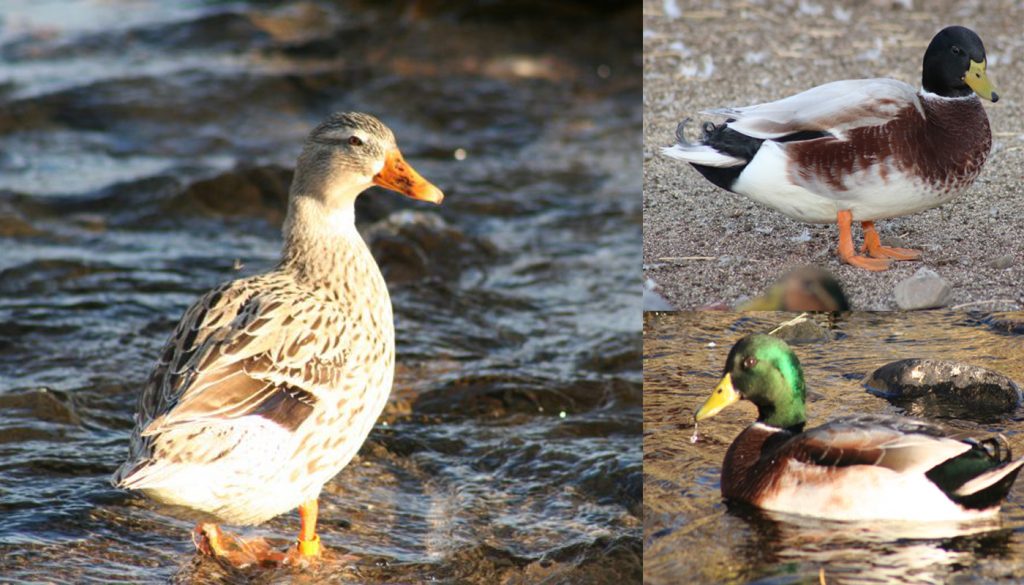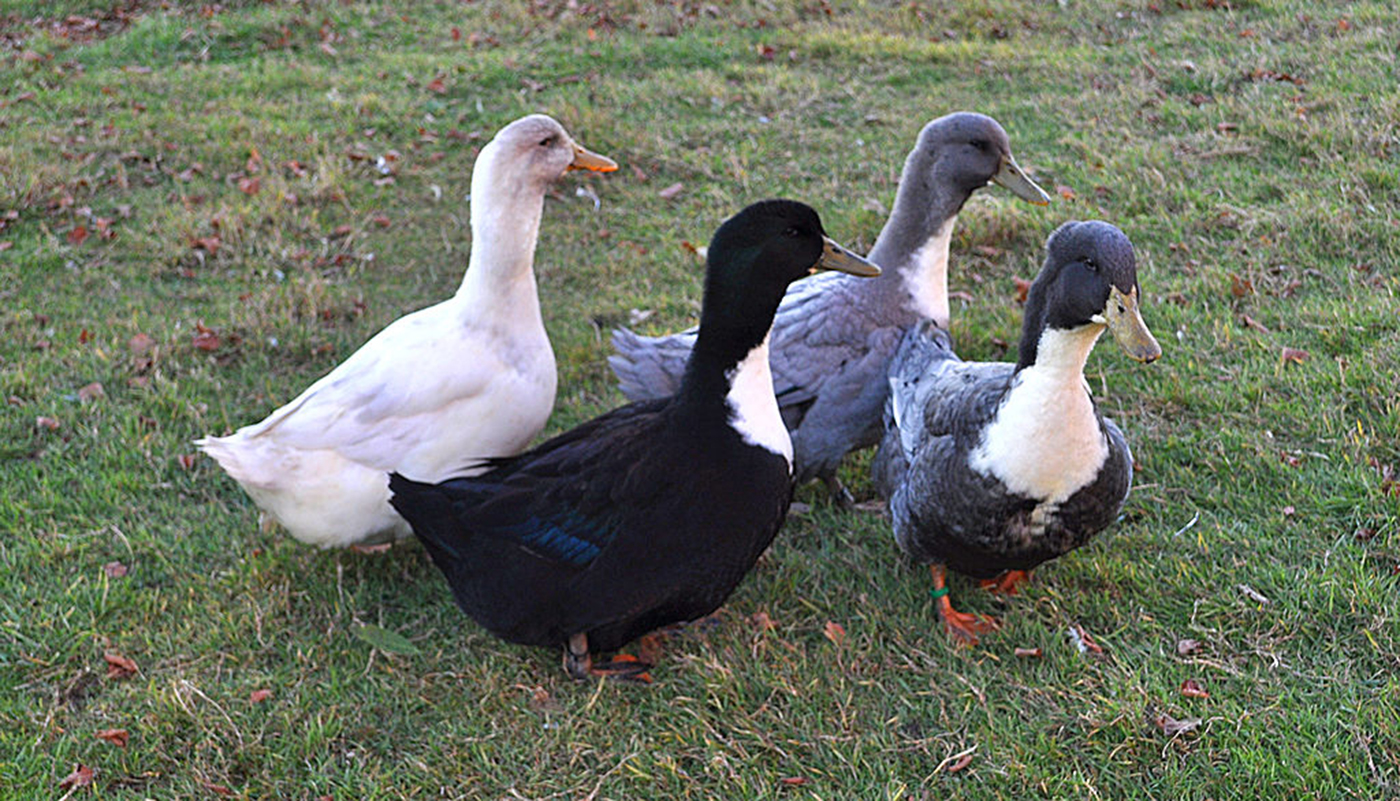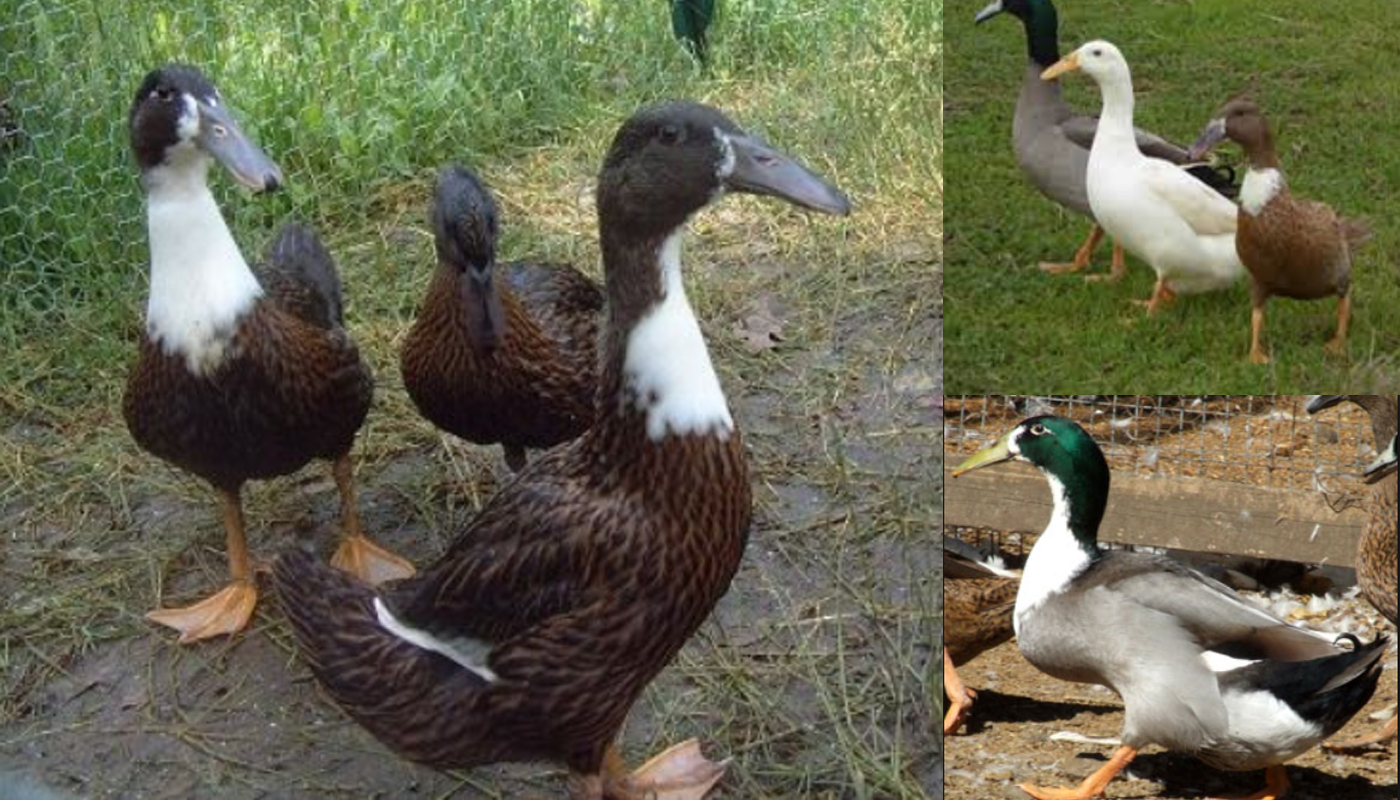
Don’t be mislead by this Bantam duck’s name. It may be called an Australian Spotted duck, but the breed was actually developed in America.
They may also be smaller than standard sized ducks but that does not mean they are not mighty little creatures. They have an exceptionally sweet character and are quite friendly. They are also very hardy little ducks that will keep your garden free of pests such as beetles, slugs, snails and other insects. They are really good at eliminating mosquito larvae from various ponds, pools and puddles around the garden.
They are usually kept primarily as pets, ornamental or for exhibition. But they lay a good amount of medium sized cream, green or blue healthy eggs. Their meat makes a decent meal due to their breast size and has been said to be most delectable.
They also make a very good starter duck for first-time chicken owners and are good around supervised children.
GENERAL INFORMATION |
|
|---|---|
| Country of Origin: | North America |
| American Poultry Association: | Not Recognized by the American Poultry Association |
| Duck Category: | Bantams |
| Duck Class: | Unclassified |
| Colors: | Bluehead, Silverhead, Greenhead |
| Good starter duck?: | Yes |
| Bantam Variety Available? | They are a Bantam breed of duck |
| You may Also Like: | 10 BEST BANTAM DUCK BREEDS |
| Good starter duck?: | Yes |
| You may Also Like: | TOP 10 GOOD STARTER DUCK BREEDS |
APPEARANCE / IDENTIFICATION
| DUCK BITS | DESCRIPTION | COLOR | |||||||
|---|---|---|---|---|---|---|---|---|---|
| EYES⇒ | Dark | ||||||||
| BILL⇒ | Same for M & F | Mottled Yellow | |||||||
| * Black bean tipped | |||||||||
| CRESTED? | No | ||||||||
| LEGS⇒ | Medium Same for M & f | Yellow | |||||||
| Not too far apart as they have smaller bodies | |||||||||
| FEET⇒ | Same for M & F | Yellow/Mottled | |||||||
| WINGS⇒ | Similar in M & F | Depending on the duck’s color variety | |||||||
| Their wing feathers may be a light or darker brown some may have flecks once again depending on the variety | |||||||||
| FEATHERS⇒ | Same for M & F | Depending on the duck’s color variety | |||||||
| The varieties have different color heads. With the female’s coloring being duller than the males.Their feathers may be a light or darker brown some may have flecks once again depending on the variety | |||||||||
| SKIN COLOR⇒ | White | ||||||||
| AVERAGE WEIGHT⇒ |
|
||||||||
| *Bean: This is also called the nail. It is a small round bump found at the end of the duck’s bill. It is used for defence and to catch insects. It is almost like a fingernail and is damaged can grow back. It can also get overgrown much like fingernails if they do not have something to grind it down on. | |||||||||
| ** Note: This is an average weight for the male duck and not a guaranteed weight | |||||||||
USE/PURPOSE |
||||||||||||||||||||||||||||||||||||
|---|---|---|---|---|---|---|---|---|---|---|---|---|---|---|---|---|---|---|---|---|---|---|---|---|---|---|---|---|---|---|---|---|---|---|---|---|
Females/Hens⇒ |
Ornamental, pet and breeding. You can even get a few colorful medium-sized eggs
|
|||||||||||||||||||||||||||||||||||
Males/Drakes⇒ |
Pet, Breeding and ornamental
|
TEMPERAMENT |
|
|---|---|
| “Calm, friendly and a little docile” | |
| Good with Kids? | They are great around supervised kids |
| You may Also Like: | 10 BEST DUCK BREEDS TO KEEP AS FAMILY PET |
| Flyers? | They are Bantams and as such can fly extremely well. You may need to have their wings clipped |
| Noisy Birds? | They can be a bit chatty and noisy |
| Interact with other ducks? | They are quite sociable with other ducks but tend to prefer ducks their own size |
| Best duck breeds to mix them with: | Any smaller sized domestic breeds of duck |
| Other animals? | They are not too fussed although it is best to keep dogs and cats away from them |
IDEAL ENVIRONMENT |
|
|---|---|
| “They are a very hardy breed of bird. They love to have a paddle and forage” | |
| Ideal Garden Size? | Small to large |
| Can be Confined? | As long as the pen is big enough and they have access to dipping water |
| Free-Range | As long as they are safe from predators |
| Penned Free-Ranging? | Yes |
| Foragers | Yes |
| Endures heat well | Yes |
| Endures cold well | Yes |
| Special Requirements? | No |
| Ideal Duck House: | Enough space for them to nest and or cuddle down |
| Ideal Duck Pond: | A paddling pool or small pond |
| Flock/Paddling Size: | 2 or more ducks in the flock |
| You may Also Like: | 22 Best DOMESTIC DUCK BREEDS |
GOOD TO KNOW |
|
|---|---|
| “They are an extremely endangered breed of duck with just on over 1000 ducks left with only about 500 breeding ducks.” | |
| Special Care/Attention Requirements? | Check with the American Livestock Conservancy |
| Known Predators: | Check with animal control in your area for known predators |
| Conservations Status: | Critical For more information on poultry, conservation status, check the American Livestock Conservancy Website |
| Breeders Clubs: | It is best to check with the American Poultry Association for various clubs and or organizations. |
| Where to buy them: | Duck Creek Farm or check with the American Livestock Conservancy |
| Other: | If you do not want to risk having your ducks shipped check with your local poultry farms for advice on your nearest supplier. |
HISTORY
The Australian Spotted Duck was developed in the United States of America in the 1920’s. It was developed by John Kriner and Stanley Mason who were both from Pennsylvania.
The Australian Spotted Duck was developed from crossing Northern Pintail, Mallard and Call ducks. There was also an unidentified Australian breed of duck. These four breeds were kept together, and they interbred for many generations before carefully selected off-spring were used to create the Australian Spotted duck.
It was not until 1990 that the breed was more available to the public and duck owners. Although it is a breed that is quite popular for exhibitioners and duck meat/egg connoisseurs their numbers are still very low. They are listed on the Livestock Conservancy register as “study” which means they are being closely watched to ensure their numbers do not diminish to a critical stage.
For its size, this Bantam breed of duck is an excellent all-around duck and makes a really good backyard duck breed. They will keep the garden well rid of pests as well as mosquitos’ as the larvae are a tasty treat for these little ducks. But be warned as they can fly extremely well they do tend to prefer sticking close to their home patch. It is advisable, however, to have their wing clipped to ensure that they do not fly off.
Health
They do not have any major known health issues. But all domestic animals should have regular health and pest checks. Ensure they are vaccinated if required.
- Ducks need water to ensure they do not get “wet feather” disease. This is where the preening gland dries out. Water also stops them from getting pests such as mites, fleas, ticks, lice, etc.
- Well, fed ducks should hardly have any health issues.
- Any birds kept in a flock need to be dewormed. Although ducks are not as prone as other poultry they should still have a de-worming regime. Speak to a local vet or poultry experts for advice. Our article on Healthy Ducks has some great tips and advice on de-worming ducks.
 Rouen Duck Breed – Everything You Need to Know
Rouen Duck Breed – Everything You Need to Know Swedish Blue Duck Breed – Everything You Need to Know
Swedish Blue Duck Breed – Everything You Need to Know Gadwall – Wild Dabbling Duck Breed
Gadwall – Wild Dabbling Duck Breed Pomeranian Duck Breed – Everything You Need to Know
Pomeranian Duck Breed – Everything You Need to Know Saxony Duck Breed – Everything You Need to Know
Saxony Duck Breed – Everything You Need to Know Duclair Duck Breed – Everything You Need to Know
Duclair Duck Breed – Everything You Need to Know Hookbill Duck Breed – Everything You Need to Know
Hookbill Duck Breed – Everything You Need to Know Magpie Duck Breed – Everything You Need to Know
Magpie Duck Breed – Everything You Need to Know Ancona Duck Breed – Everything You Need to Know
Ancona Duck Breed – Everything You Need to Know Keeping Backyard Ducks – Pros and Cons
Keeping Backyard Ducks – Pros and Cons Appleyard Duck Breed – Everything You Need to Know
Appleyard Duck Breed – Everything You Need to Know Domestic Duck Breeds – Getting your Ducks in a Row! Part 2
Domestic Duck Breeds – Getting your Ducks in a Row! Part 2